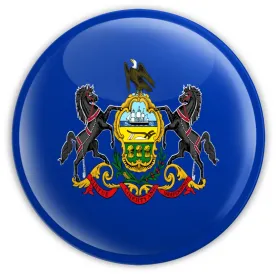Recently, Governor Wolf and the PLCB issued guidance for hospitality businesses beginning to serve customers inside (green) or outside (green and yellow). We covered that guidance in our last blog post, “Pennsylvania Governor Issues Updated Guidance for Hospitality Businesses Conducting In-Person Service.”
Governor Wolf released updated guidance addressing some of the issues that were presented when the previous guidance was put into action. This blog post will simply outline those changes and the full guidance can be found here.
The changes from the previous guidance include the following:
Indoor Seating for Restaurant, Retail Dispenser, and Hotel Licensees
-
Maximum indoor occupancy limits are determined by comparing Method 1 against Method 2, the most restrictive calculation method governs
-
Method 1:
-
If there is a known fire capacity number, the licensee should decrease that amount by 50%; OR
-
If the fire capacity number is not known, 24 people are permitted per 1,000 square feet
-
-
Method 2:
-
Determined by arranging the tables so that no customer at one table is less than six feet away from a customer at another table
-
-
EXAMPLES:
-
Fire Code Capacity Known
-
Method 1: Licensee has a known fire code capacity of 50 persons, reducing this number by 50% would equate to 25 persons
-
Method 2: Licensee arranges the tables so that no customer at one table is less than six feet away from a customer at another table, leaving the licensee with the ability to accommodate 30 persons
-
Which method governs?
-
Method 1 because it is more restrictive (25 persons vs. 30 persons)
-
-
-
Fire Code Capacity Unknown
-
Method 1: Licensee’s building is 2,000 square feet; using the 24 persons per 1,000 square feet ratio, the building could accommodate 48 persons
-
Method 2: Licensee arranges the tables so that no customer at one table is less than six feet away from a customer at another table, leaving the licensee with the ability to accommodate 30 persons
-
Which method governs?
-
Method 2 because it is more restrictive (30 persons vs. 48 persons)
-
-
-
-
-
Miscellaneous
-
If a licensee provides seating for on-premises consumption of alcohol, then they must also provide for on-premises consumption of food in accordance with their license requirements
-
Standing in a bar area is not permitted, alcohol service is limited to table or bar service (except golf courses) and no more than four customers with a common relationship may sit together at a bar, all other bar patrons or groups must be separated by six feet
-
If live music is being provided, all existing restrictions on entertainment remain (permits, noise ordinances, etc.)
-
In-Person Guidance for Clubs and Catering Clubs
-
Outdoor seating (yellow)
-
No more than four customers sitting together
-
No more than 25 persons for a discrete event
-
A minimum of six feet or a physical barrier between customers
-
-
Green
-
Food sales are permitted, but not required, at club locations
-
Licensees are encouraged to suspend the operation of amenities and congregate areas non-essential to the preparation and service of food or beverages such as child play areas, interactive games, and video arcades, but it is not required
-
Breweries, Limited Wineries, Distilleries, and Limited Distilleries
-
The new rules applicable to restaurant, retail dispenser, and hotel licensees are likewise applicable to manufacturing licensees serving on-premises (listed above)
This blog post was written by Pennsylvania Summer Associate, Benjamin MacLuckie, who is currently enrolled at Temple University Beasley School of Law in Philadelphia. Ben received his Bachelor’s degree, magna cum laude, in Environmental Science from Widener University, where he earned Dean’s List, the Widener University Science Award, and the Clinton Global Initiative Award.




 />i
/>i

